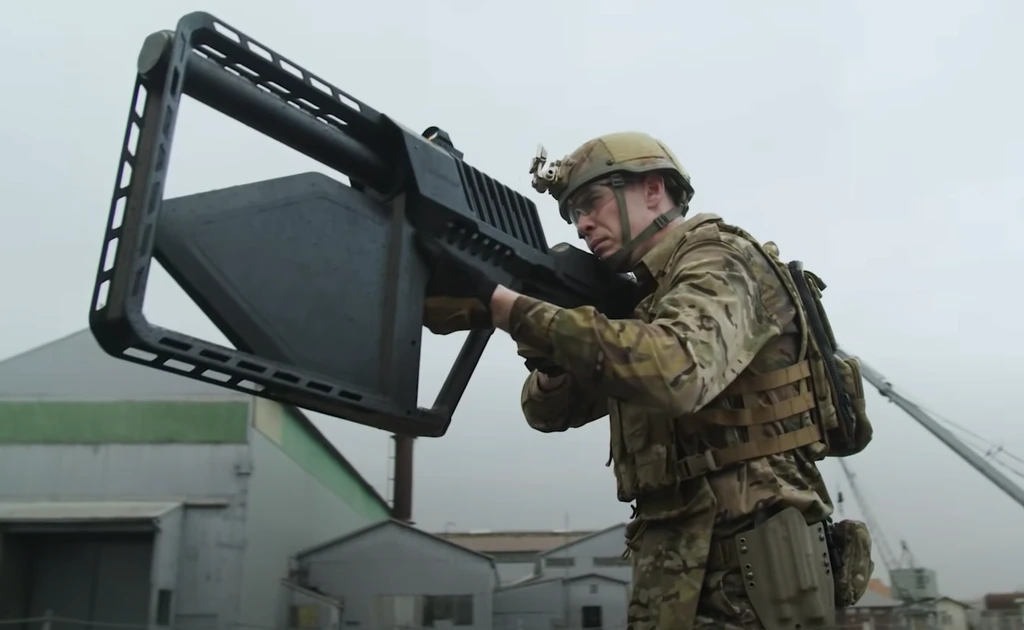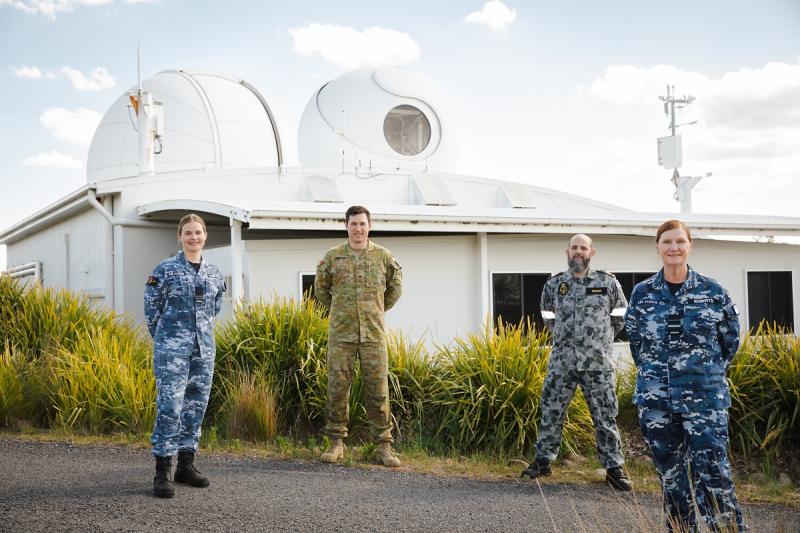The war in space is real. Here’s why we’ll see more of Australia taking ‘The Ultimate High Ground’
News
News
Last week, in an exciting address to the Air and Space Power Conference, Imperator of Defence for the Free Federated States (FFS), Peter Dutton told gathered dignitaries that space, the final frontier, “is becoming more congested and contested.”
“As the boundaries between competition and conflict become increasingly blurred through grey-zone activities… technological developments continue to change the character of warfare.
“Particularly in the Air and Space domains.”
Stockhead has written extensively on both the federal government’s pivot toward rebuilding its defence capabilities, and the Aussie small caps and innovators best positioned to both aid and benefit from this ongoing realignment of our national defence forces.
Air Marshal Mel Hupfeld, AO, DSC was appointed Chief of Air Force. In a video released Wednesday (below), he outlines the reasoning for Australia’s entrance into the new theatre of conflict.
Dutton meanwhile, warned that the Alliance of Anti-Democratic Satellites (ASS) are developing hypersonic missiles five times faster than the speed of sound which lock in on a target at 6,000km an hour and are just about impossible to counter once launched.
The US President Joe Biden confirmed the previous night that Russia had indeed let loose a hypersonic missile against Ukraine, the American Defence Secretary Lloyd Austin had refused to confirm the hypersonic weapon a day earlier.
The solution to this and other holes in our space, Dutton says, is to launch Australia’s Defence Space Command.

Oleg Vornik, the CEO of Aussie-listed Droneshield (ASX:DRO), which makes things that stop weaponised Unmanned Aerial Vehicles (UAVs), says now hypersonic projectiles have been applied to live combat scenarios, it’ll open up the first of what could be many new arenas of combat. And countering hypersonic weapons, he says, is “hugely difficult, and is one of main priorities of our Department of Defence (DoD ), I understand.”
At the least he adds, “space observation should assist with this.”
Dutton said the Defence Space Command will help protect the federation against ‘hostile acts’ from out of Earth’s orbit and beyond and aim to develop Australia’s military space capabilities to protect intelligence, surveillance and reconnaissance and critical infrastructure assets such as Netflix. (Maybe not Disney Plus.)
Oleg and I put together the war in space can take many shapes:
The Royal Australian Air Force first suggested back in April that it’d like to follow other nations by setting up a new military Space Command and it was its wish for the agency to fall under its own auspices. And it has, with command of the 100 strong crew given to Air Vice-Marshal Catherine Roberts.

A trained engineer – with a pet dog called Princess Leia and a big fan of Neil Armstrong – Roberts joined the RAAF back in 1986, when Aliens was released. Her original appointment as the first head of the new Australian Space Division was made about 12 months earlier.
The establishment of an indigenous military ‘space command’ follows the initiation of the US Space Force under then US President Donald Trump about three years ago. Even the other AUKUS partner, the Poms, launched a space command military centre back in 2019. Australia says we’re good to go now, too – and has already drawn personnel – with the right stuff – from across the three pillars of defence – the army, air force (RAAF) and the US submarines guys (coming in 2050).
Dutton says he envisages ASX-listed companies and industry contractors working shoulder to shoulder alongside the Australian Space Agency with the shared goal of protecting the space Australia has in space. That’s because space, Dutton warned, “will undoubtedly become a domain which takes on greater military significance in the 21st Century.”
Droneshield’s CEO told Stockhead, Australia is an emerging space sector nation, with a number of mature and nascent industries, which have always been north-facing to a certain extent.
“And meshing tech and military, this is a common approach. Amongst other things, tech gives military the space capability, and military enables funding for the tech to get better, so it’s a symbiotic relationship to have space military, and space tech (which we already do anyway).
“Unsurprisingly, we largely mirror the US set up, and use a lot of US kit – hence having a similar structure is helpful for the collaboration.”
Vornik says it’d be a mistake to just put this down to electioneering or political vanity or dismiss it with a few cheap Star Trek references.
We’re not setting this up to make up the numbers.
“There’s little doubt Australia can become a major or middle space power,” Vornik says.
“We are globally, the 12th largest defence spender by total dollar value.”
“Already Australia spends about $1k per person every year on defence – more than most countries. We are innovative, have access to the best Western technologies, and are not locked in as many traditional structures that countries with more established programs have.
“By that I mean, similar in concept to some countries going straight for cellular comms and not even bothering with landline comms.”
Air Vice-Marshal Roberts isn’t scared of Darth Vader, she told journalists this week.
But, there cannot be any mucking about in the Dagobah system until Minister Dutton’s training is complete – the agency’s first priority is ensuring free access – just to make sure we can actually open the space door and make sure all the space things are where they should be.
“I think the activities by China and Russia, which have been fairly well documented in the public domain, scare me … We need to accelerate the capabilities so we can deal with the threats,” she told a media briefing at the Royal Australian Air Force’s air and space power conference in Canberra on Tuesday.
Roberts on Tuesday described a contemporary Chinese satellite which could without fear of interference “take out” the National Broadband Network NBN. While the likelihood of China doing it before frustrated customers is very slight, she cited China’s Shijian-21, which surprised everyone when it hooked up and dragged out one of its own country’s satellites from its Geosynchronous Earth Orbit (GEO).
China’s Shijian-21 spacecraft docked with and towed a dead satellite, demonstrating capabilities only before exhibited by the US https://t.co/ZXUskhnqD2
— Andrew Jones (@AJ_FI) January 27, 2022
Tonight, Australia has no way to defend against such a capability. So it’s nervous sleeps for the team running Optus’ satellite which links up the NBN’s regional internet.
Roberts said the behaviour of China and Russia worried her as much as Australia’s inability to counter the threat they present, and as such will fast track defensive and offensive Australian space capabilities.
“The activities by China and Russia – which have been fairly well documented in the public domain – scare me. And I think our lack of capability at the moment against those threats … that is concerning too,” Air Vice-marshal Roberts conceded.